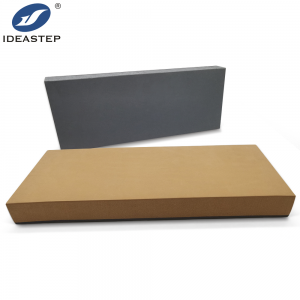
EVA foam has a wide range of applications, such as being used for insoles in our company. Some people may wonder how EVA foam is produced.
Here are the general steps involved in the production of EVA foam:
Raw Material Preparation: The main ingredients for EVA foam production are ethylene and vinyl acetate. These materials are typically mixed together in a precise ratio to achieve the desired properties of the foam.
Mixing: The ethylene and vinyl acetate are blended together in a mixer along with various additives such as blowing agents, cross-linking agents, and colorants. The additives help in controlling the foam’s density, flexibility, and other characteristics.
Extrusion: The mixed material is then fed into an extruder, which is a machine that heats and melts the mixture. The extruder has a screw mechanism that pushes the molten material through a die, forming a continuous sheet of foam.
Expansion: As the molten EVA material exits the die, it enters a zone of lower pressure, causing it to expand and form a foam structure. This expansion is facilitated by the presence of blowing agents, which release gases when heated.
Cooling and Cutting: The expanded foam sheet is then cooled using water or air to solidify it. Once cooled, the foam sheet is cut into desired sizes or shapes using cutting machines.
Finishing: The cut foam pieces may undergo additional processes like surface texturing, laminating, or adhesive application, depending on the intended use of the EVA foam.
Of course, different factories may have variations in their production methods. The following provides a general overview of our production process. If you are interested in EVA foam, you can continue to visit this page (https://www.aideastep.com/eva-blocks-top-covers-for-cad-cam-milling/) and tell us your needs.
